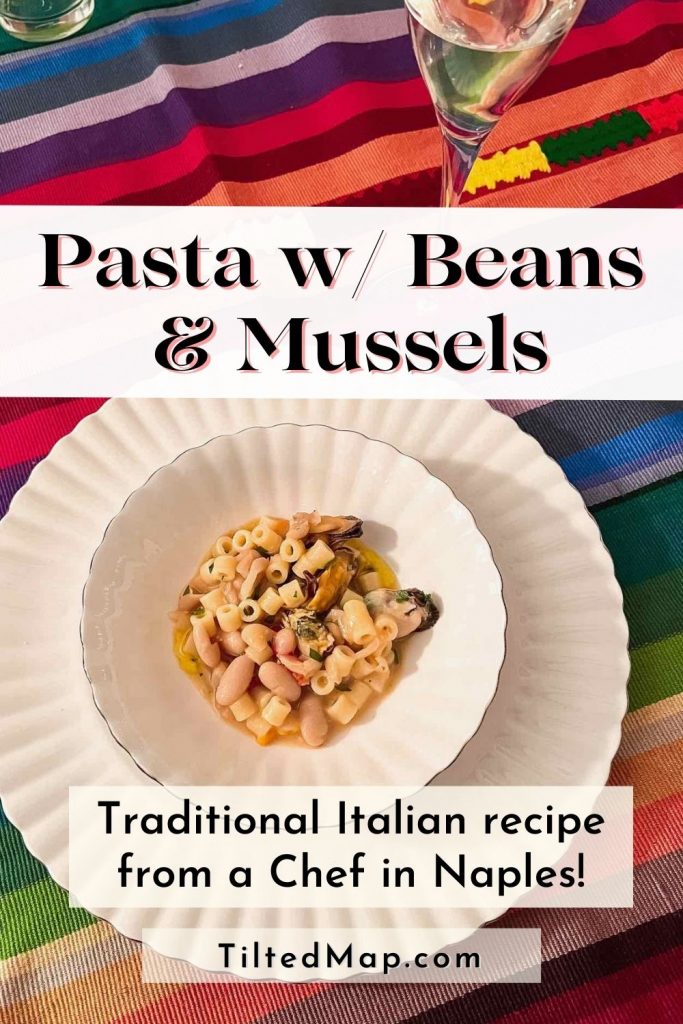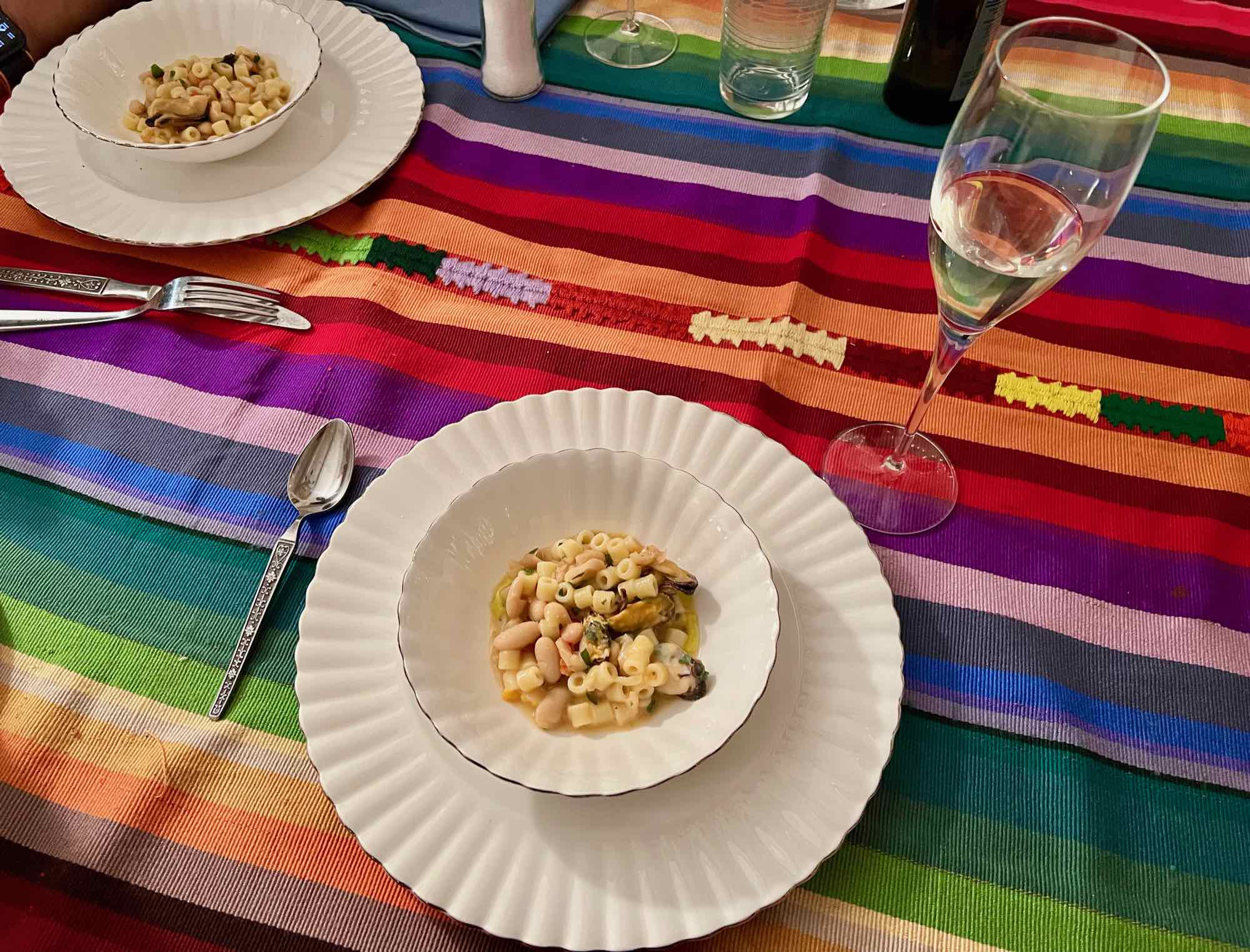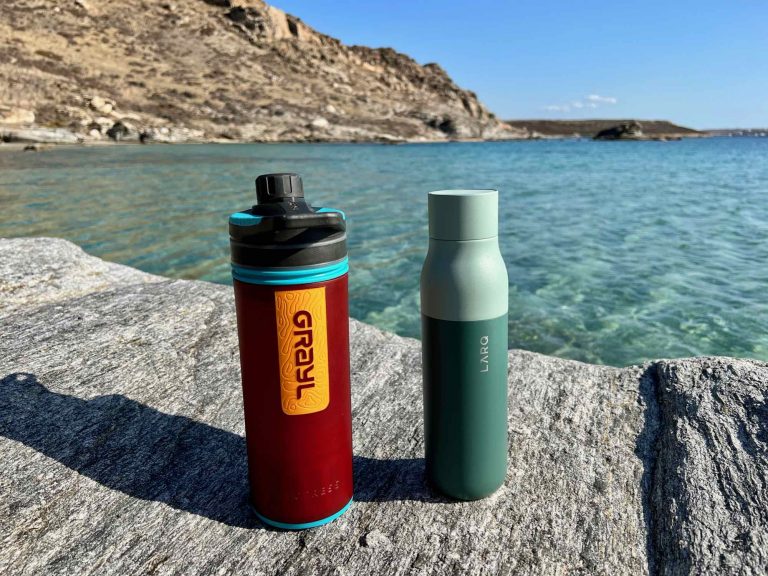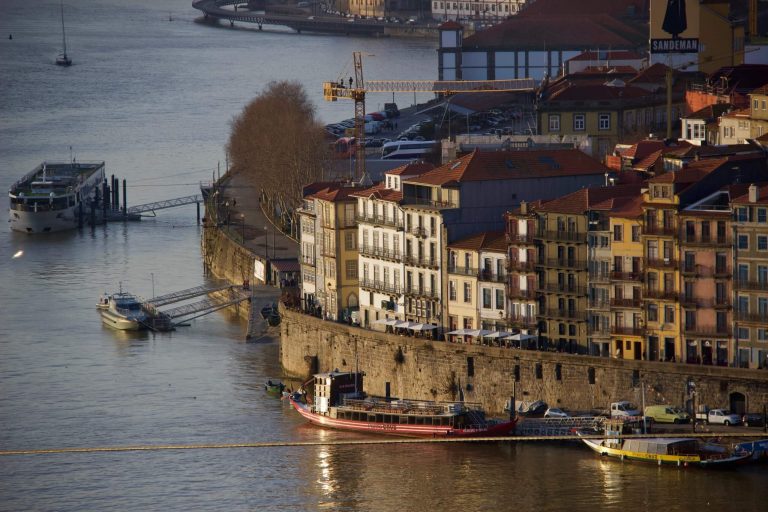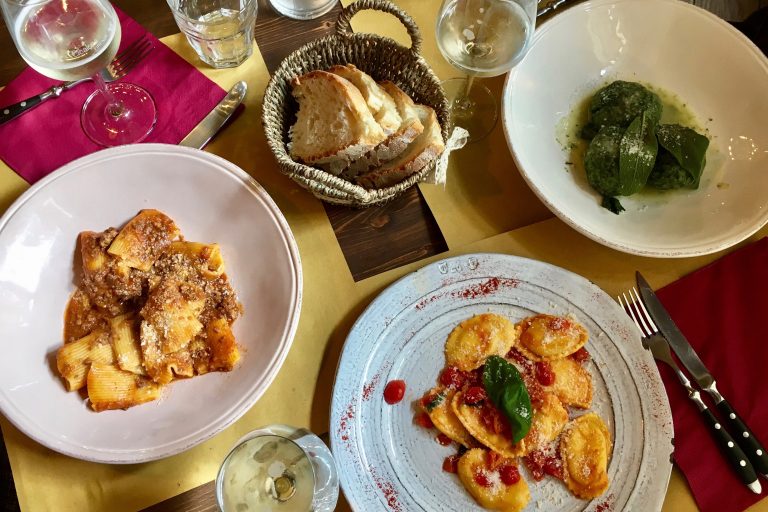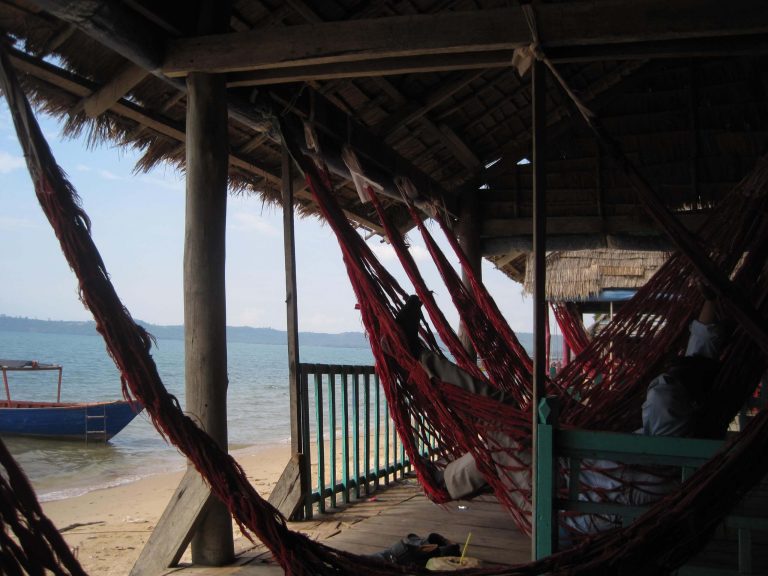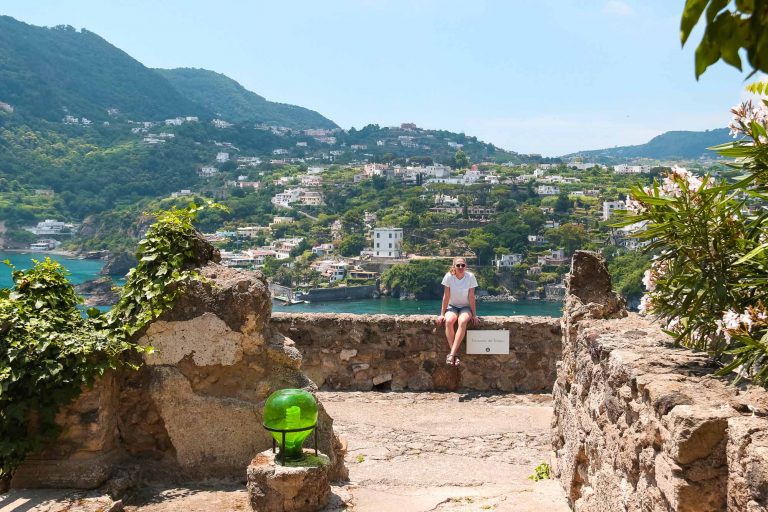A Chef’s Recipe from the Island of Ischia: Pasta with Beans & Mussels
Pasta with beans and mussels? I’d never heard of this Southern Italian combination until I took a beautiful, early summer trip to Ischia – one of the picturesque little islands in front of Naples. Capri is its more famous neighbor but, as I learned, Ischia is more laid-back.
I took the trip with my husband, Emanuele, a native of Milan, who was just as dubious about the recipe – which just highlights the wonderful diversity of cuisines from one Italian region to the next. Sometimes you only have to cover a few miles to find a new traditional dish.
(If you’re looking for a traditional Italian pasta recipe that’s vegan or vegetarian, check out my Pasta with Lentils, or Pasta with Broccoli recipes.)
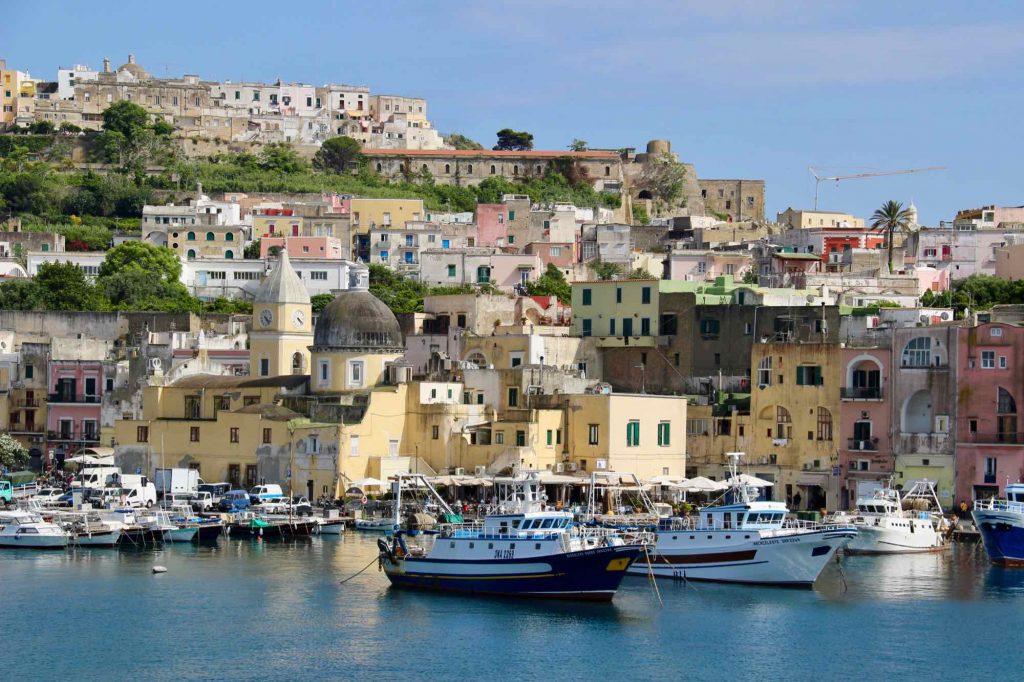
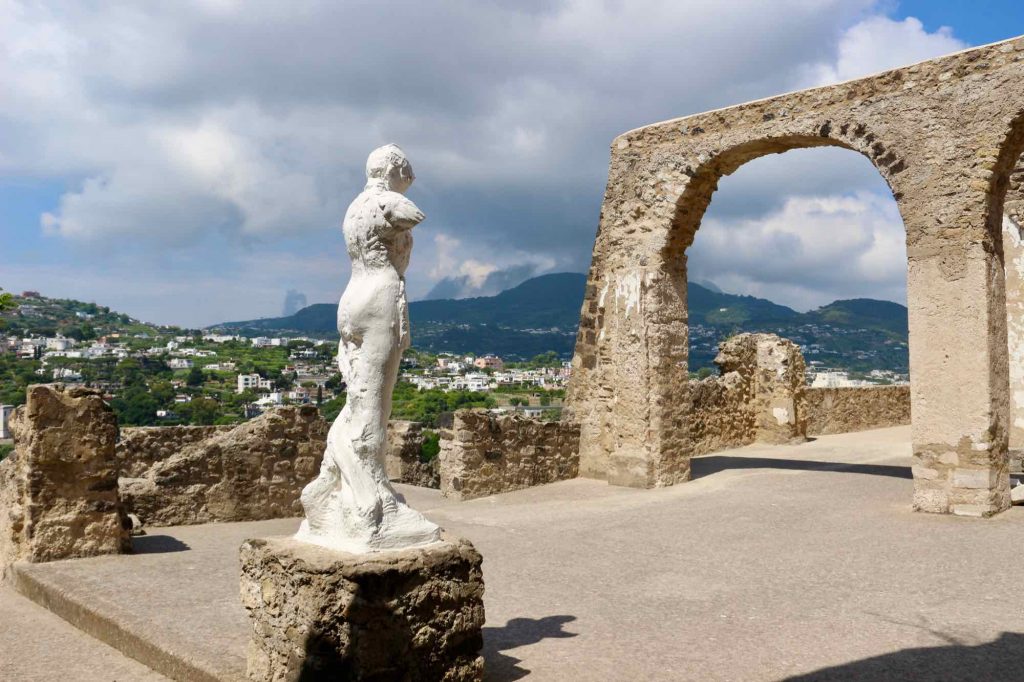
After seeing mussels and beans on several menus all over Ischia, we sat down for dinner at an adorable little beach restaurant called La Pazziella (which has now made it onto my list of restaurants I recommend in Italy).
The waitress and co-owner, Emilia, was so friendly and talkative that we felt comfortable quizzing her about the island, the dialect, and everything on the menu. (While she quizzed us on weird American vocab and pop culture. I would swear we got the better end of the exchange, but hey, that’s the beauty of travel when everyone gets to ask the questions they actually want the answers to.)
The name of their restaurant, Pazziella, means toy in the Neapolitan dialect. Since Emilia’s husband, Francesco, the chef and co-owner, had spent most of his career working in upscale restaurant kitchens in Naples, their intimate little restaurant on the beach, with just a few tables, was something of a toy in comparison.
And pasta with white beans and mussels, she explained, was a traditional recipe from the mainland city of Napoli (Naples), just a hour’s ferry-ride away.
(There’s a similar Italian dish with mussel and beans that’s a soup; this is not that. This recipe makes a solid, hearty plate of pasta with just a little bit of soupiness.)
They were offering the dish with soft, chewy, potato-based gnocchi instead of regular pasta that evening. Emanuele gave it a try, while I ordered the Gnocchi with Clams and Pecorino Romano cheese – another wild combination we’d never seen before!

Normally seafood and any kind of dairy are a forbidden pairing in Italy. (Yes, that includes butter.) So I had to try it, because I love seeing Italians break their own food rules.
My dish was delicious, but it was such a powerfully strong combination that I don’t think I’d order it again. But we were impressed by how much we both loved Emanuele’s pasta with beans and mussels.
We ate, drank, and chatted with Emilia so much that night, that we were the last people to leave the tiny restaurant.
And when Francesco finally came out of the kitchen, he was happy to share his recipe for pasta con cozze e fagioli, reciting it from memory as Emanuele scribbled it on a scrap of paper.
And that recipe is exactly what I’m sharing with you below, with their permission, of course.
A Little Italian Language Note:
(Beans are fagioli in Italian (“fah-JOE-lee”), while mussels are cozze (“COAT-tzay”). A little pronunciation tip: The tz sound of how we pronounce pizza in the US is in fact the right way to pronounce Z’s in Italian. And unlike in English, when there’s two of a letter in Italian, you say it twice.)
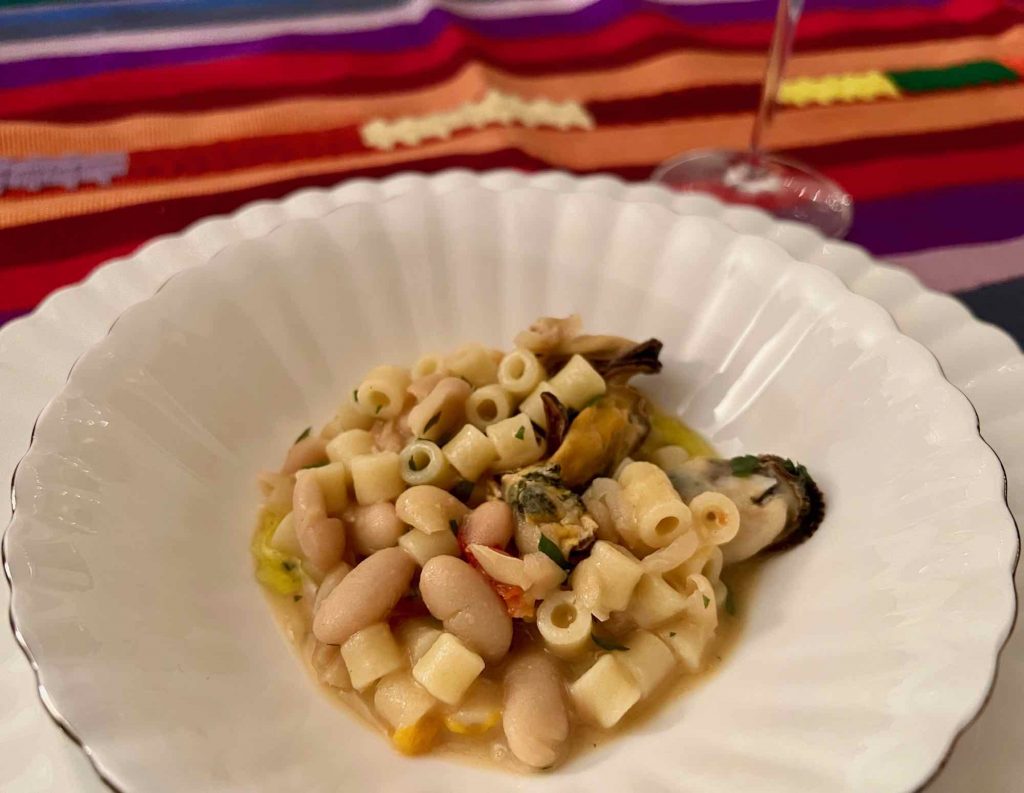

Pasta with Beans and Mussels / Pasta con Fagioli e Cozze –
Ingredients:
- About 4 T olive oil (for cooking – not extra virgin)
- 2 cloves of garlic
- A handful of fresh parsley, chopped
- About 1 pound of fresh, clean mussels (about ½ kg. Weighed in the shell)
- About 1 cup of water
- 1 can of cannellini beans (14.5 oz or 450 grams)
- 2 or 3 cherry tomatoes (pomodorini), cut in half
- 1 celery stick
- 100 grams (more or less, or 3.5 oz.) of dry pasta corta (short pasta – we used ditalini)
- Extra virgin olive oil
Recipe Instructions:
1. Grab a pan with a lid (about a 12-inch one). Put in about 2 tablespoons of olive oil, one whole garlic clove, the chopped parsley, and the mussels. Make sure your mussels are clean, and remove any broken or open ones.
(We used frozen parsley, which we’d minced when it was fresh – great way to keep herbs from going to waste!)
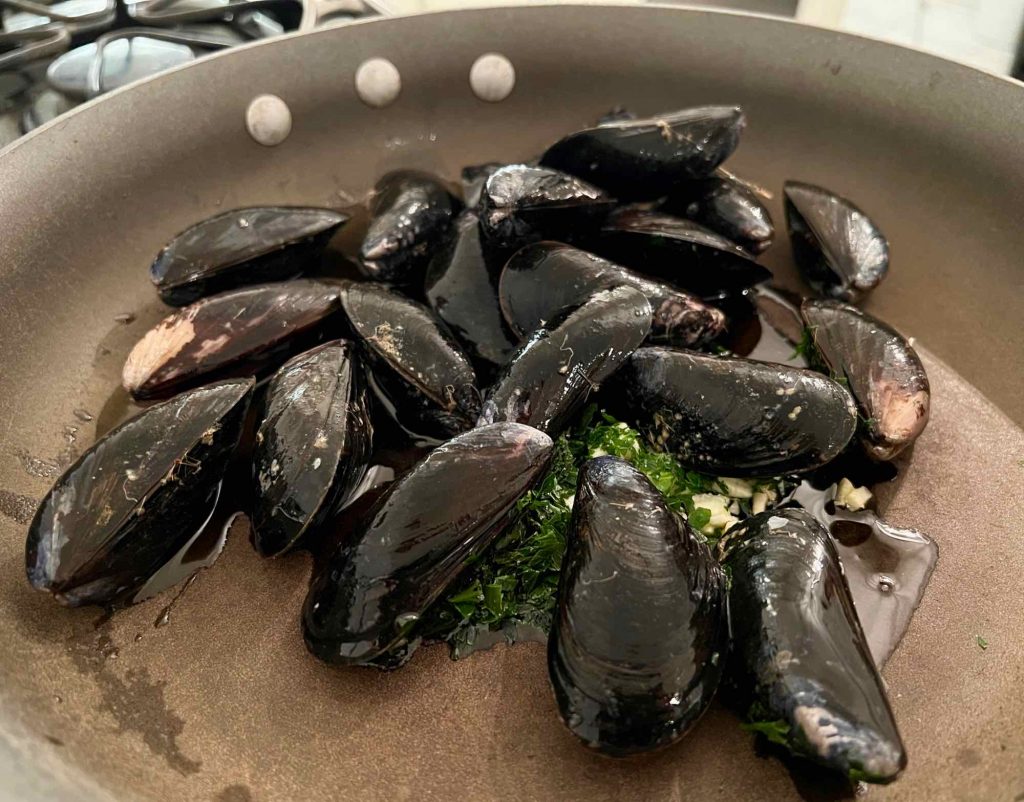
2. When it all starts to sizzle lightly, add two “scoops” of water and put the lid on. (That would be what Francesco called due mestoli in Italian. With our scoop (a soup ladle), two measured out to about 1 cup, so we’ll just assume that’s right.)
3. When the water starts to simmer, turn off the heat and remove the mussels with a slated spoon. They should be open at this point!
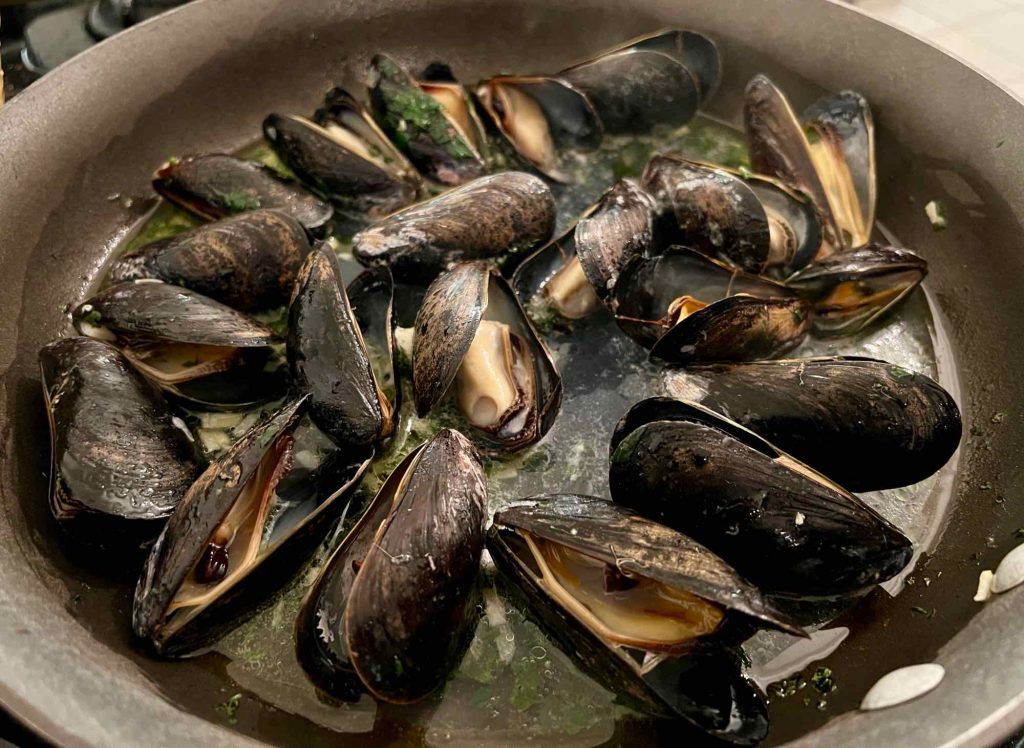
4. Drain the water where you cooked the mussels – YOU WANT TO KEEP THAT MUSSEL WATER, but just filter out the garlic, parsley, and any sand that came out of the mussels. We poured the water through a fine mesh strainer into another container. (Don’t worry, there’ll be new garlic.)
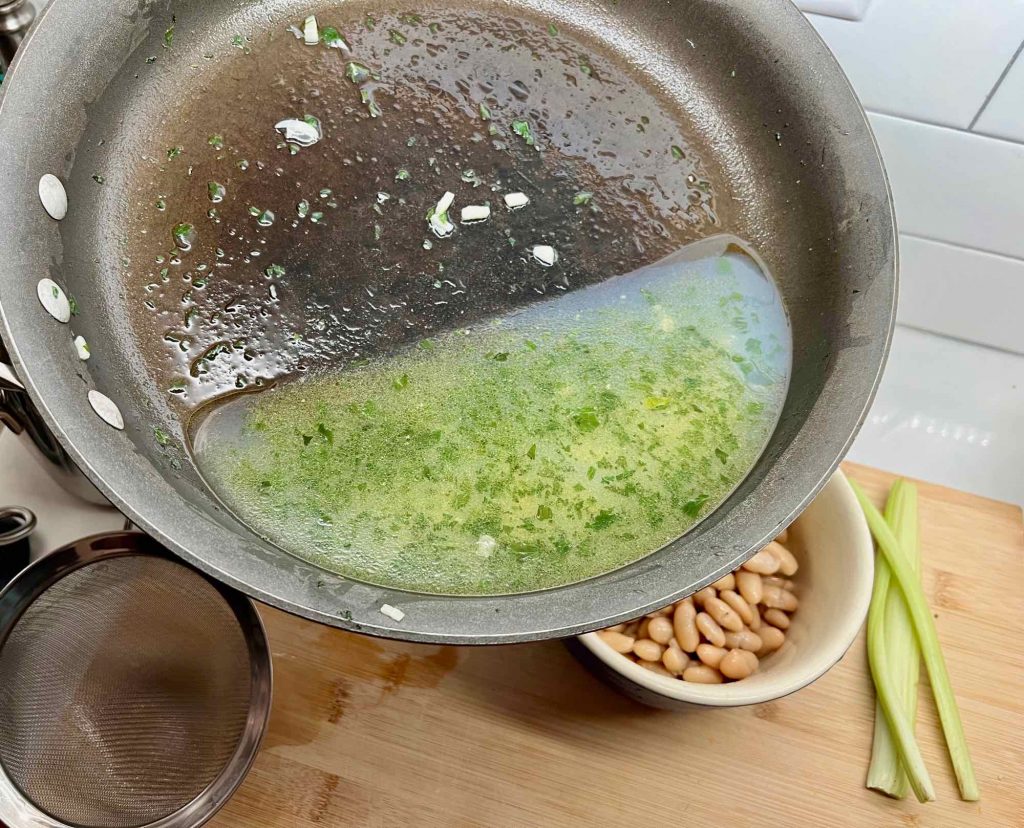
5. Take the mussels out of their shells. You can do this with a spoon, but we found it was easier with our fingers. They should come out easily.
6. Drain the beans.
7. In a medium sauce pan, add about another 2 T of olive oil, the other clove of garlic (minced, if you want it strong, or whole to tone down the garlic a bit), the celery stick (whole), the cherry tomatoes (cut in half), and a pinch of salt. Turn the heat to medium.

8. When it starts to sizzle, add the beans and about 1 cup of water.
(This is the only tweak we recommend making to Francesco’s recipe: He originally said to use 1 to 2 cans’ worth of water. We used about 1.5 and it was too much, so we had to drain some off later. Remember, you don’t want the amount of water you’d normally use to cook pasta, because you won’t be draining this at the end.)
9. When it starts to boil, add the mussel/garlic water that you saved from step 4.
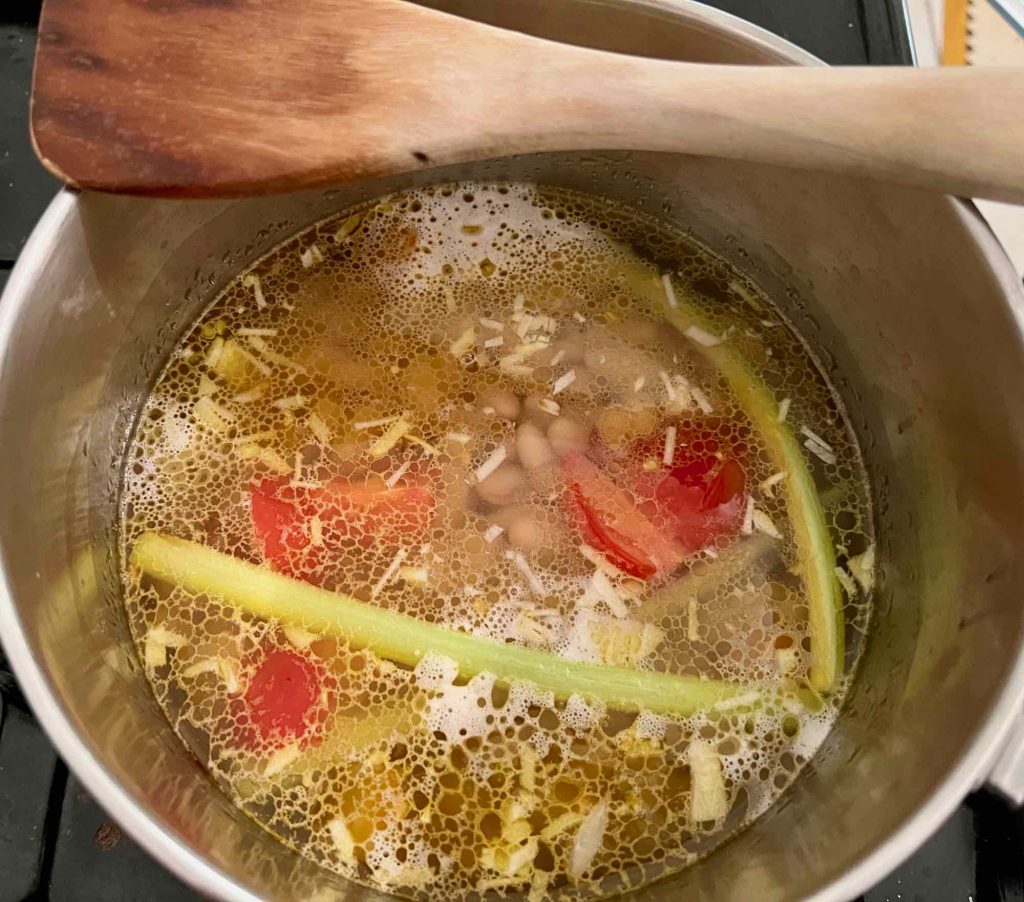
10. When that all boils again, add the pasta and set a timer for however long your pasta takes to cook. (I always do at least 1 minute less than it says on the package here in the US, to avoid over-cooked, mushy pasta.)
11. Stir continuously.
12. When the pasta is cooked, remove the celery and add the mussels. Keep stirring for another minute or so. Turn off the heat, add a tablespoon or two or extra virgin olive oil, and let it rest for a minute.
In Italian, this would be un filo d’olio, which literally means a thread of oil, and I just think it sounds so much more charming that way. (If you have any idea what a thread of olive oil is.)
Enjoy!
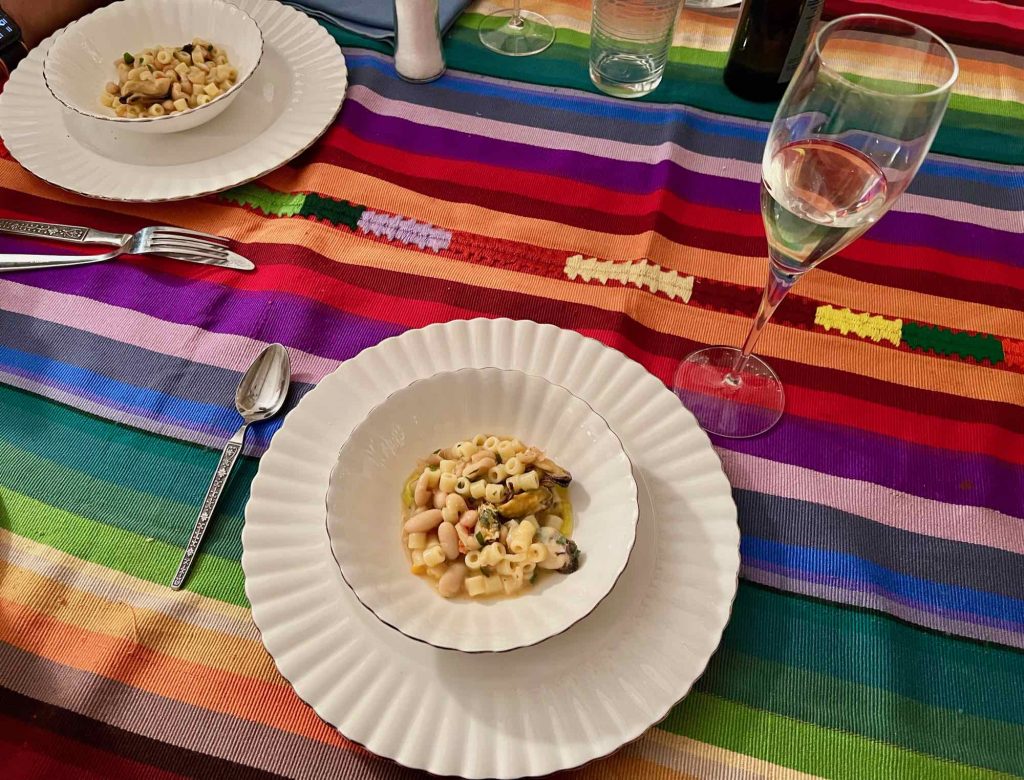
If you haven’t already, check out the other authentic Italian recipes on this blog:
- Pasta with Lentils (a recipe from Puglia, that comes from a family friend)
- Pasta with (Soft, Flavorful) Broccoli (my father-in-law’s specialty)
- I’ve also shared some Italian aperitivo cocktail recipes from a chef and mixologist, which is probably the best place to start.
